Most gardeners grow onions (Allium cepa) organically since it is an easy job with an abundant result. You should plant this useful, cold season vegetable in early spring regardless of whether you pick out yellow, white, or red variety.
In general, you can expect the best harvest if you live in southern parts of the US, preferably in California and South Carolina. Moreover, in these States, you can plant these veggies in autumn or winter and get an extended growing season. On the other hand, if you live in Maryland or Oregon, for example, you need to wait for longer, warmer days to start planting this crop.
Facts about Onions
It is not clear if onions originated in West Pakistan, Iran, or central Asia. However, nowadays, it is probably one of the most widespread vegetables in the world.
There are a lot of benefits of onions:
- Onion is full of nutrients – This veggie low in calories contains a high level of vitamin C as well as vitamin B6 (pyridoxine), vitamin B9 (folate), and potassium.
- It is beneficial for the heart – Onion reduces the levels of cholesterol and decreases triglycerides.
- It fights inflammation – Thanks to the high level of antioxidants and its antibacterial properties, onion lowers the possibility of infections and help the body fight heart disease, diabetes, and even cancer.
Also, this valuable crop helps in blood sugar control and boosting bone density.
How to Plant Onions in Your Garden
Sowing
At the end of the season, you will notice long scapes with a blossom on the top of your onions. When letting it stay and pollinate, you will find seeds there. Sow them the next spring in well-drained soil, and you will get new plants after a while.
Be prepared that sowing onions from seeds mean that you will wait for harvest a few months longer. This way is justified only if you want to cultivate rare varieties worth of waiting.
- Sowing onions indoors – Sow four seeds per pot, approximately 0.25 to 0.5 inches (0.6 – 1.3 cm) deep. You can do it pretty early, even during winter. Transplant your seedlings without disturbing the gentle onion roots. Prepare the ground in your garden, and put seedlings about 4 inches (10 cm) deep into holes. Keep in mind that the rows should be at least 12 to 18 inches (30.5 – 46 cm) apart.
- Sowing onions outdoors – You can also sow your onion seeds directly in the garden, but you can’t do it before spring when the soil is warm enough. Place seeds 0.5 inches (1.3 cm) deep and approximately 1 foot (30.5 cm) apart. Thin your seedlings the way they are 2 to 4 inches (5 – 10 cm) apart depending on the size of bulbs.
Onion sets
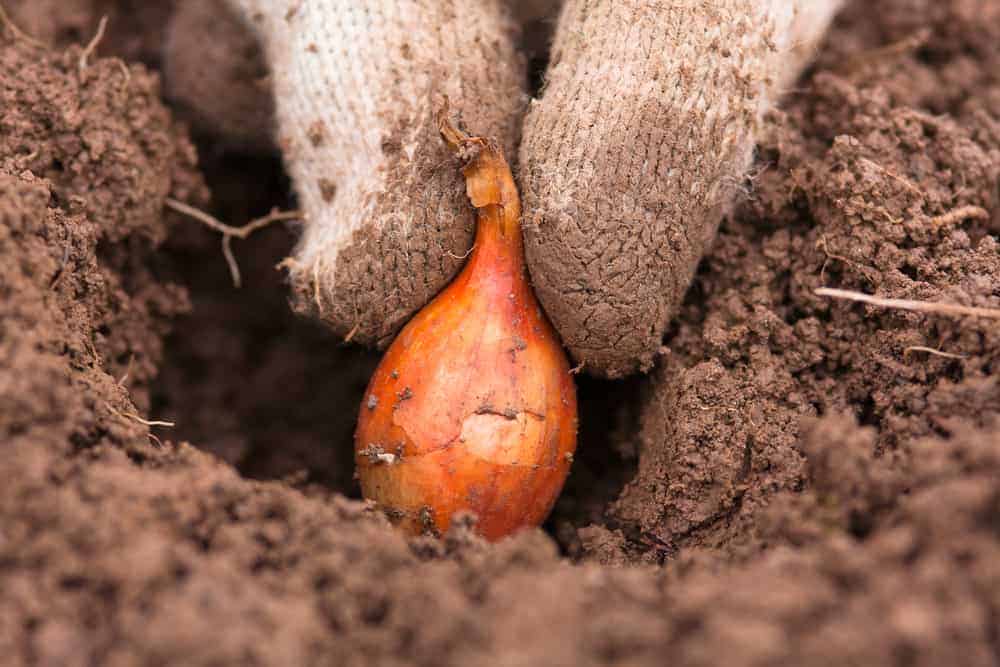
You can also purchase a package of tiny, dried onions which seed companies prepare for gardeners. That way, you will harvest your crop after only three months.
Place them root-side-down, with 1 to 4 inches (2.5 – 10 cm) of space between to prevent touching of mature plants. Expect the occurrence of tiny green spikes in less than two weeks.
Pony packs
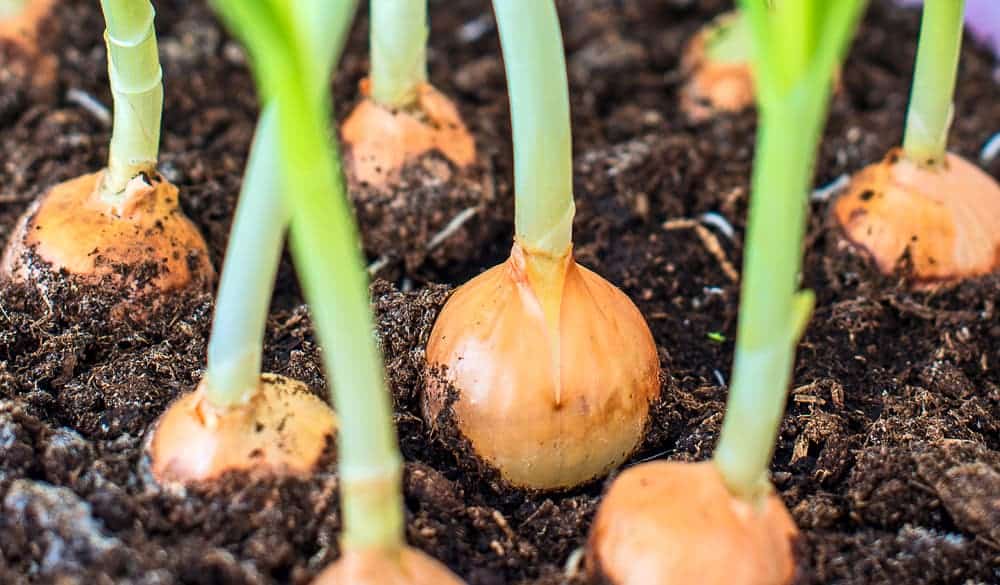
Buy these onion seedlings in a local garden center when you wish to grow specialty onion varieties. After removing the mass of onions from cups, you should crumble the soil and separate the seedlings. Put every seedling in the separate hole. Water them gently while they are growing.
Growing onions from cuttings
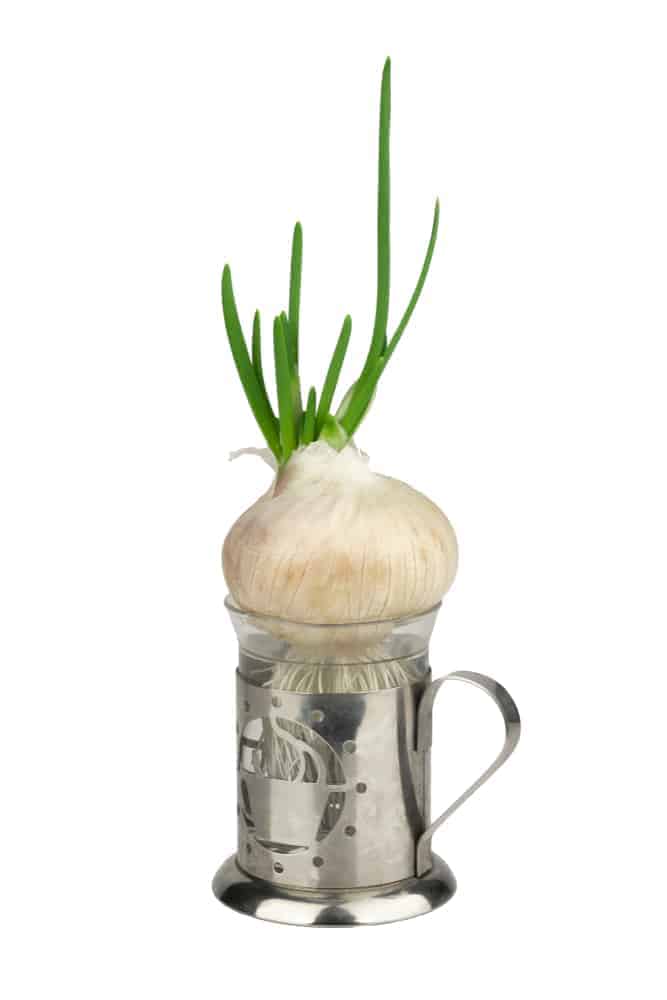
You can always start your onions from seeds, but growing them from cuttings is more practical. That way, you will need less time from the beginning of the process to the moment of harvesting.
You should start planting cuttings in early spring if you plan to grow your veggies outdoors or at any time of the year if you begin growing them indoors. Cut approximately 1 inch (2.5 cm) from the bottom of the fresh onion bulbs and remove the outer peel.
Let them dry for 12 to 24 hours with the cut side up. When these pieces dry, poke four toothpicks in every onion bottom the way you get an X. Place each piece over a glass full of water and put all glasses at a sunny window until onions begin to root after three to four days. Take care that the onion bottoms just touch the surface of the water.
As soon as you notice small, white roots at the bottom, you can plant the cuttings in pots filled with well-draining soil or directly in your garden. When the onion cuttings establish well, add the soil over them.
You need to water cuttings right away after planting to help them adapt to the new environment. After that, spray nitrogen fertilizer directly into the ground.
Grow scallions
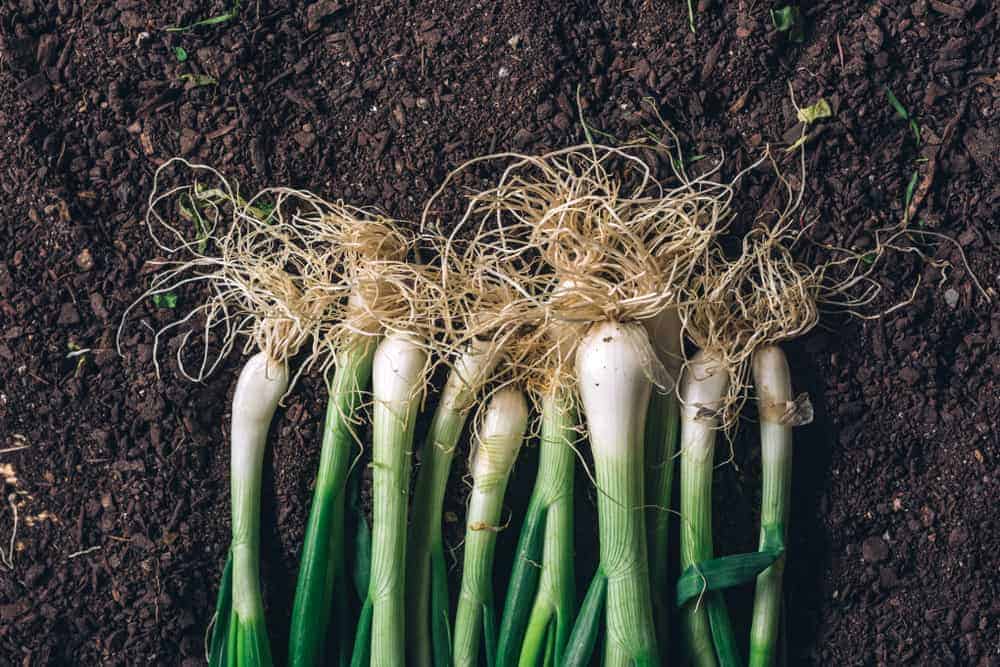
Scallions are young, green onions without entirely formed bulbs. Sow mild and sweet varieties 1 inch (2.5 cm) apart and harvest them after a month.
How to Care Onions
Site
You can grow these veggies in most climates. A couple of weeks before sowing your onions, you should add some compost or manure on the ground, and let it firm up for a while.
Light
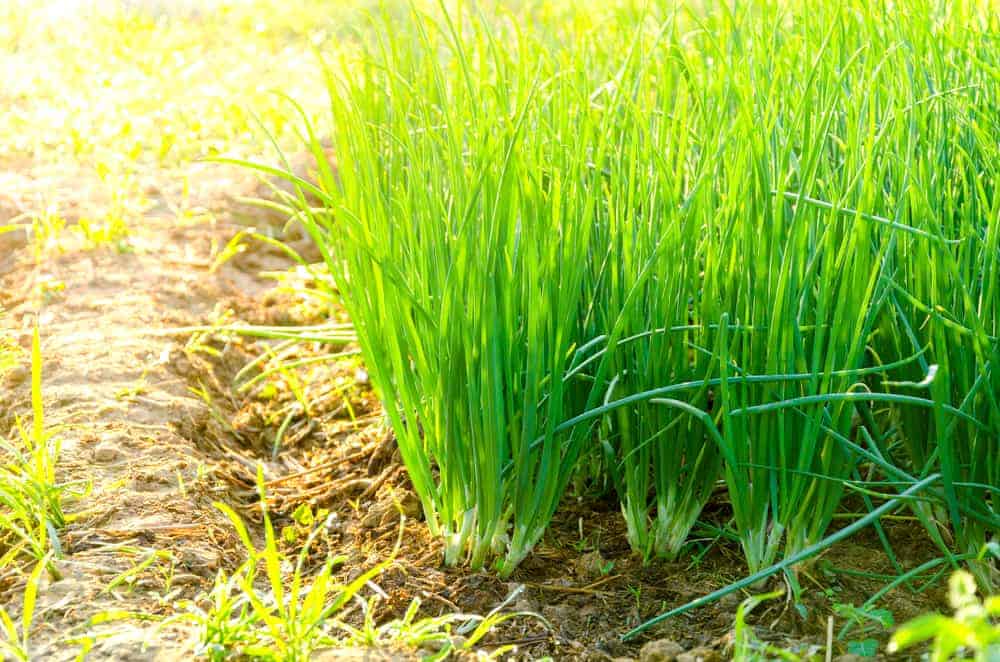
Most onions require 14 to 16 hours of light daily to reach maturity.
Temperatures
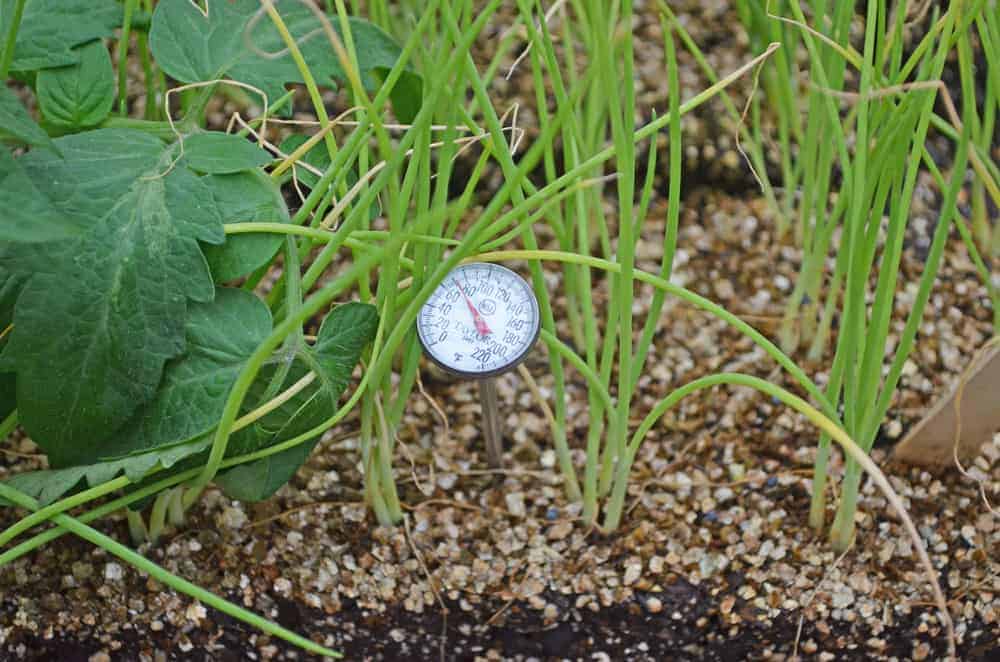
The tops of your onions will grow in cold weather, but the bulbs need warm weather to form. When you can expect your plants start bulbing will depend on the temperature and the average length of the day. Unfortunately, they won’t thrive as long as the temperatures are lower than 30 to 40 F (-1 – 4.5 C)
Soil
These veggies can grow in almost any ground, including heavy clay, but you should provide well-drained, sandy loam for the higher yields. If the soil in your garden is too heavy, you need to add manure and well-aged compost before planting. Luckily, onions can thrive in the vast range of the soil pH of 5.5 to 7.5.
Mulching
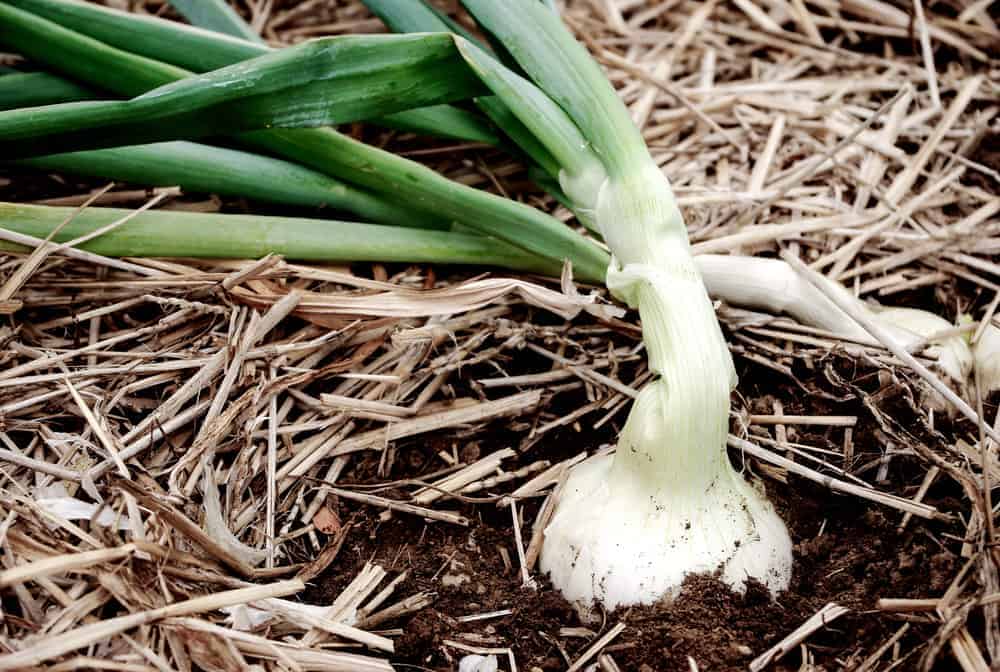
Once your onions are tall enough, you can add a 1 to 2 inches (2.5 – 5 cm) thick layer of mulch (straw or chopped leaves) around them. That way, you will retain necessary moisture in the ground and prevent the growth of weeds. Remove mulch as soon as bulbs start developing.
Watering
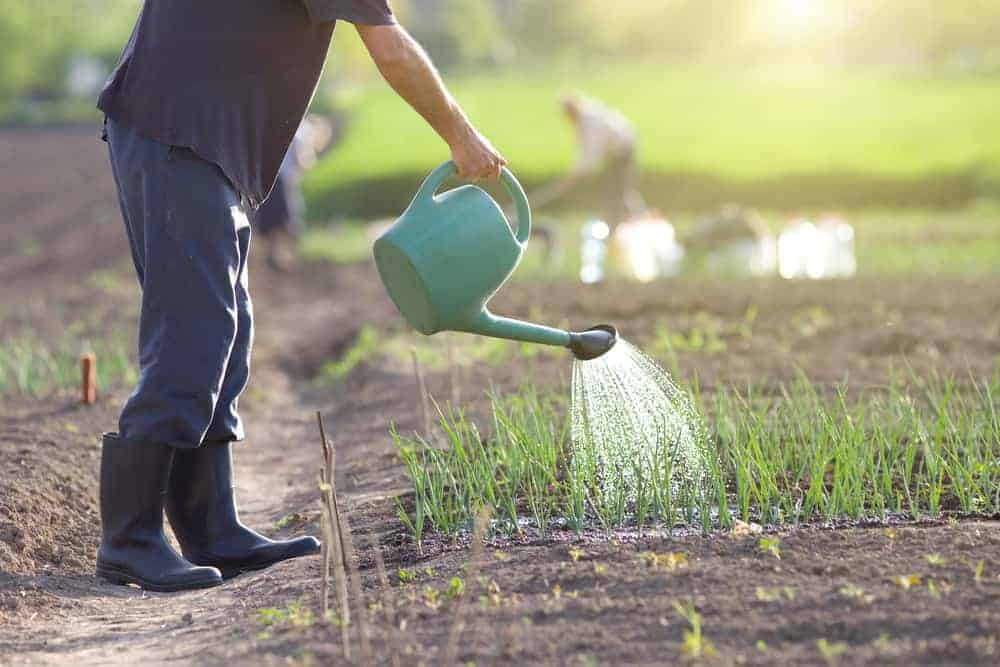
Water your onions after planting, but take care to avoid soaking them. After that, keep watering daily early in the morning until plants start germinating when you can reduce the schedule. Keep watering once or twice a week, depending on the temperature in the region you live in.
In average, your onions will need 1 inch (2.5 cm) of water a week, but it won’t be enough if you wish to produce sweeter plants. Keep in mind that lack of water will cause the splitting of your bulbs.
Approximately a month before collecting your crop, you can reduce water to allow bulbs to mature appropriately. There is also an option to escape constant watering by correct mulching your plants.
Fertilizing
As a heavy feeder, your onion will need abundant fertilizing. Use an organic 5-10-10 fertilizer early in the season to help your veggies develop large, healthy bulbs. After a month, you should feed your plants one more time with mature compost.
However, the best option is to keep feeding your onion every two weeks until the bulbs start to poke from the ground. Since onions need nitrogen, chicken manure can be an excellent option.
Weeding
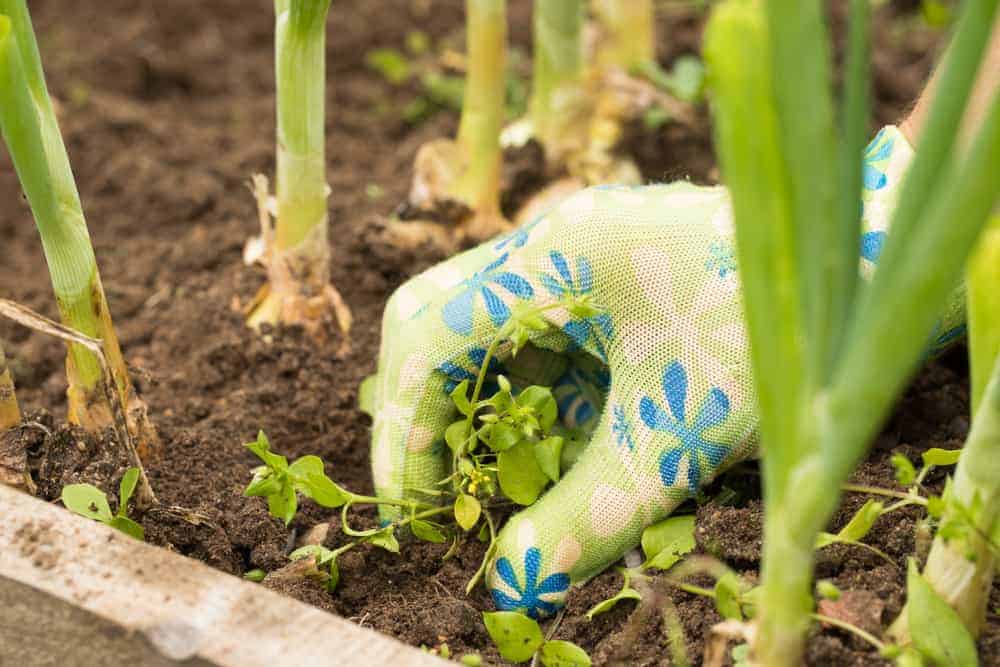
Dig the ground among your onion with a sharp hoe because pulling weeds up may damage the plants’ shallow roots.
Thinning
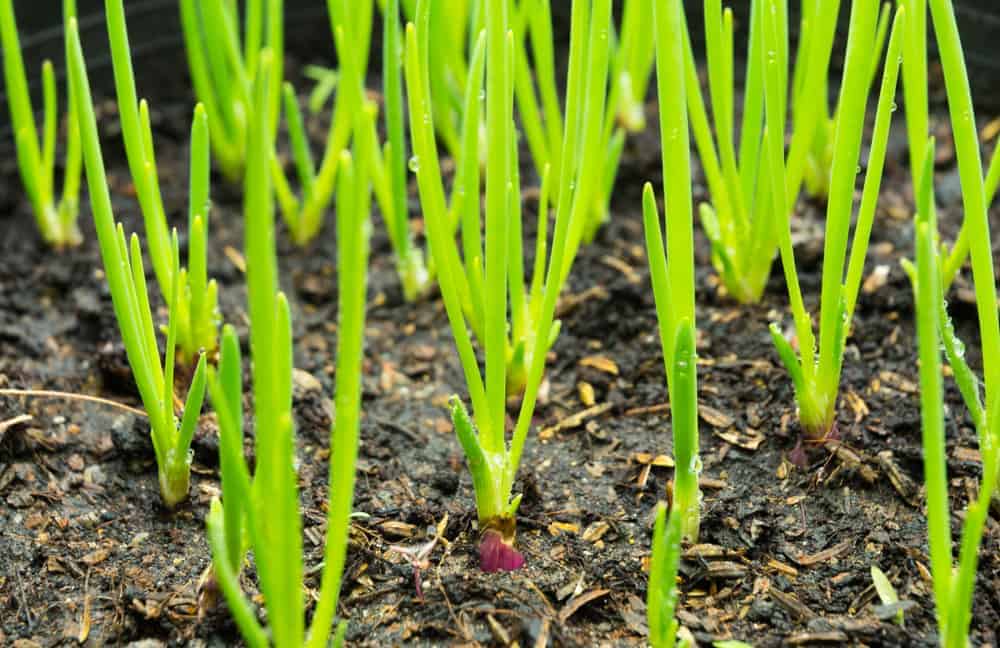
Your onions need enough space to grow adequately. Thinning after sowing seeds is always necessary because these veggies need at least 4 to 5 inches (10 – 13 cm) of free space.
How to Harvest Onions
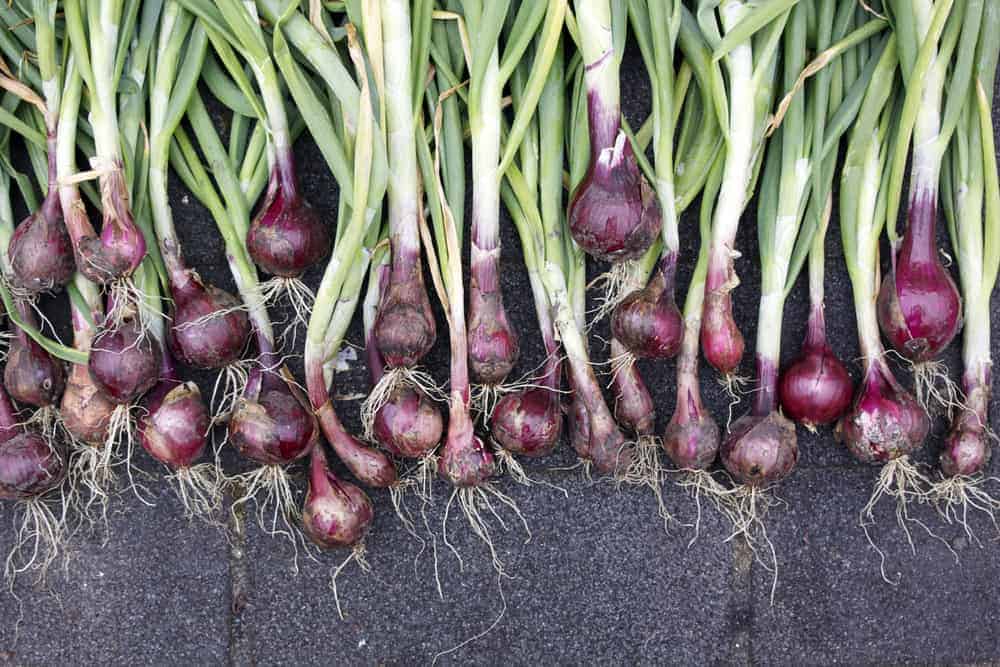
Depending on the variety of onion you decide to plant and the type of the soil, onion bulbs will contain different levels of water, sulfur, and sugars, which will determine how pungent they will be and how long you can store it.
- Sweet onions – They contain at least 6% sugar, little sulfur, and lots of water. They are not a good option for storing, and you should eat them for a few weeks after harvesting.
- Storage onions – They contain less than 5% sugar, high levels of sulfur, and lower level of water. Therefore, those varieties are an excellent option for storing.
- Scallions – You can start harvesting young onions a few weeks after planting or wait for them to become mature.
In general, the onion you planted in spring is excellent for storing throughout the winter. When the stems are about 12 to 15.5 inches (30 – 40 cm) high and become yellow and fall over, you need to wait just a week, and your onion will be ready for harvesting.
Choose a sunny day to pull up all the bulbs with a fork without damaging their skins. Hang them and let the plants dry in a dark, well-ventilated place for three to four weeks.
Then remove the tops approximately 1 inch (2.5 cm) above the bulb, and place them indoors to a right place for storing. Take care that it is dark and cold enough.
|
Bunchin onions (Scallions) |
Fresh onions |
Storage onions |
|||
|
Variety |
Harvesting | Variety | Harvesting | Variety | Harvesting |
| Crystal White Wax | 95 days | Utah Yellow Sweet Spanish | 115 days | Candy Hybrid |
200 days |
|
Tokyo Long White |
65 to100 days | Italian Torpedo | 110 days | Redwing | 115 days |
| Evergreen | 65 days | Sweet Spanish White | 110 days | Patterson |
105 days |
|
White Grano |
100 days | Southport Red Globe | 100 to120 days | ||
| Ailsa Craig | 100 days | Sturon |
80 to 100 days |
||
|
Walla Walla |
90 days |
||||
How to Store Onions
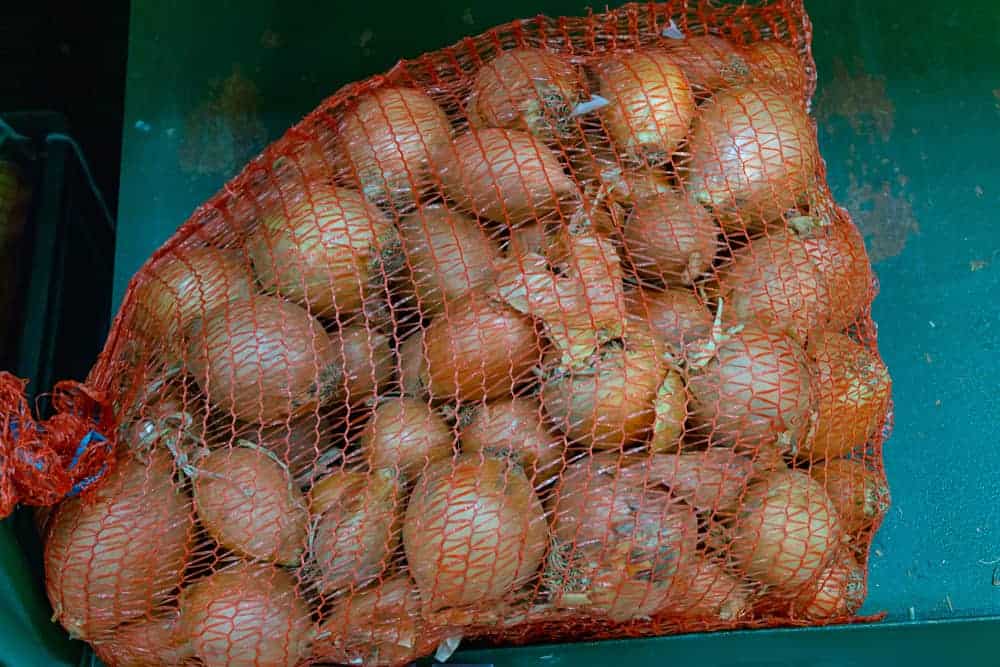
You can store your veggies in mesh bags, woven into braids, or tied into bundles for months. You can use some of them for about eight months. Keep them in a cold, dry place to prevent rotting.
Onions Pests and Diseases
Splitting
If the ground is too dry when the bulbs form, they will split and double. Adequate watering will solve this issue.
White rot
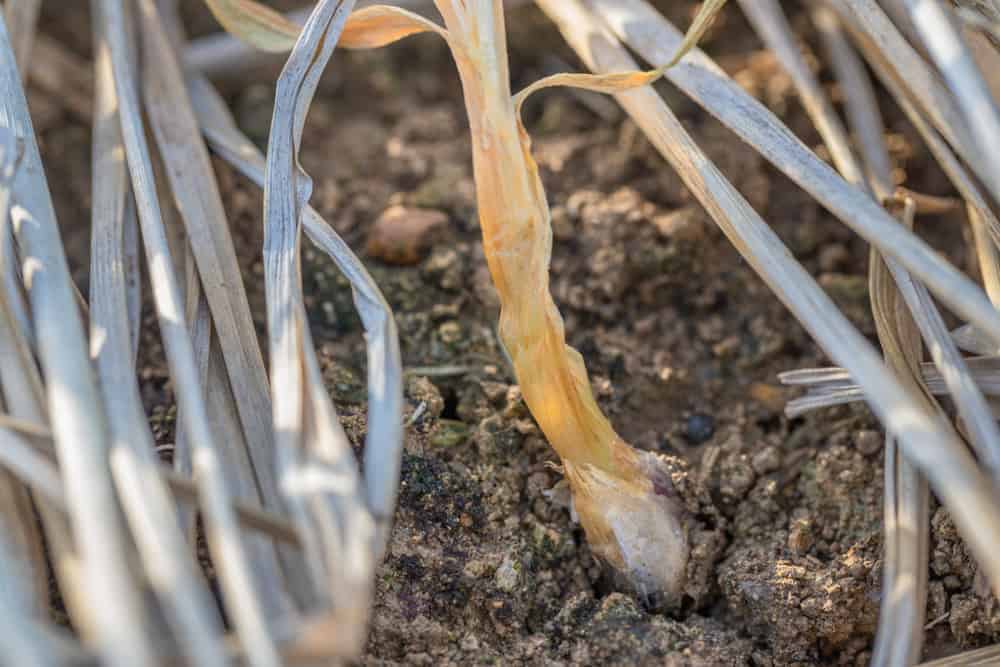
It is probably the most severe onion disease followed by yellow and wilted onions with white mold on the base. The biggest problem is that the spores can remain for seven years in the soil. Avoid the occurrence of this disease by respecting a strict crop rotation.
Onion maggots
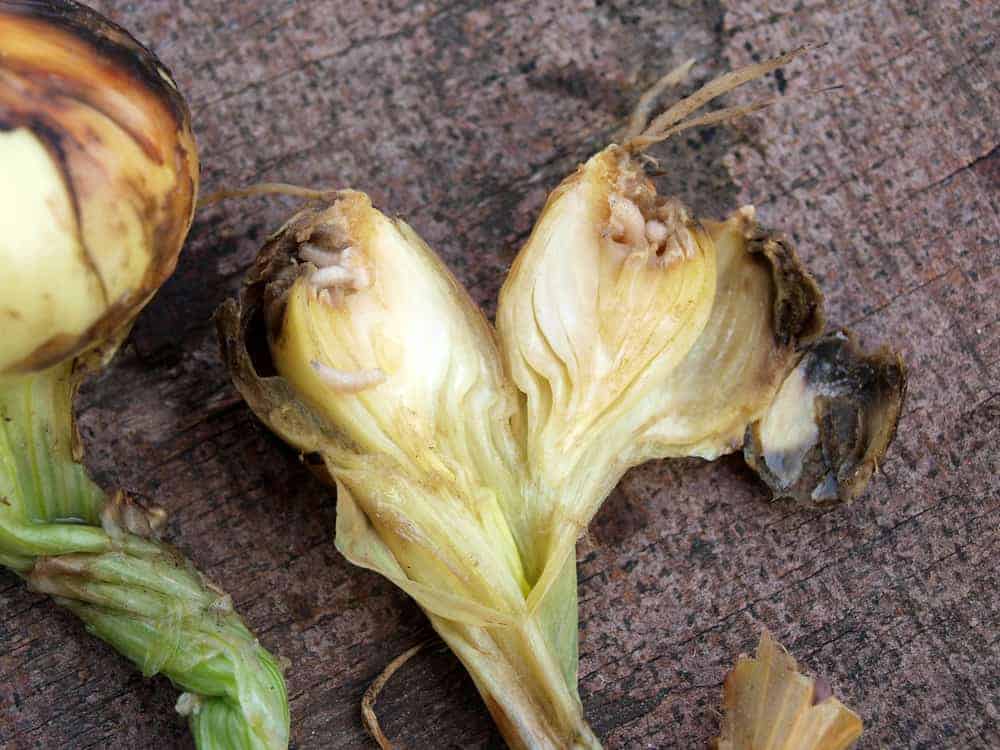
Sometimes you can spot yellow leaves which start dropping during rainy periods. The common reason is white maggots placed inside the bulbs. Young plants usually can’t survive, and older ones won’t develop correctly.
Prevent this disease and the laying of eggs at the base of your onions by covering them with mesh netting. Also, adequate crop rotating will be a helpful way to get rid of this menace.
Downy mildew
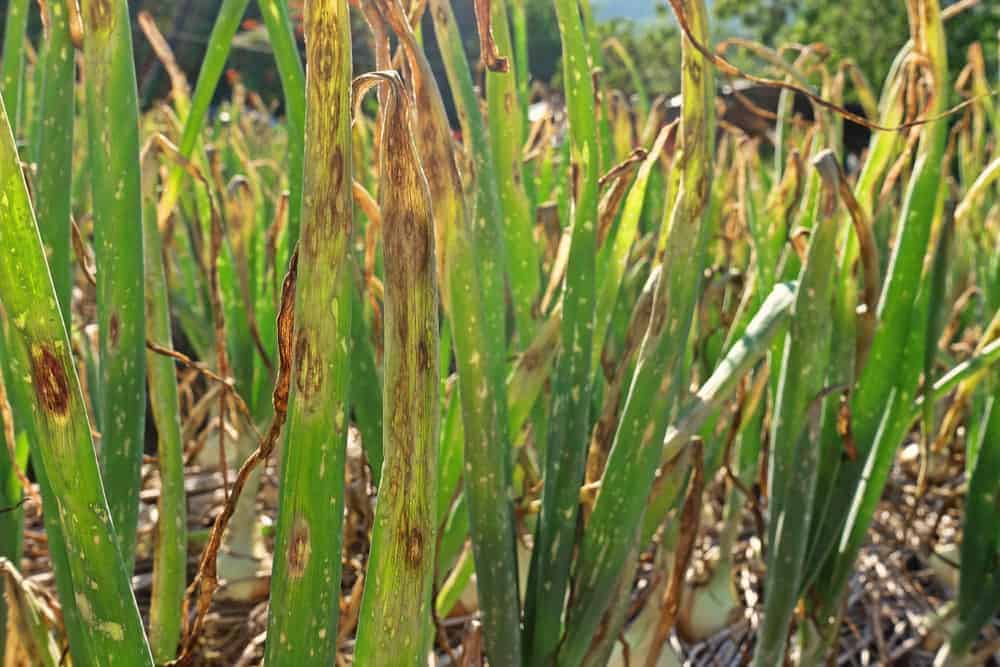
This grey mold covers onion’s leaves when the level of moisture is too high. They usually start shriveling from the tips and die eventually. The bulbs will become soft, and you can’t store them. To prevent this condition, water your onions properly and hoe around them to increase the circulation of air in the soil.
Eelworm
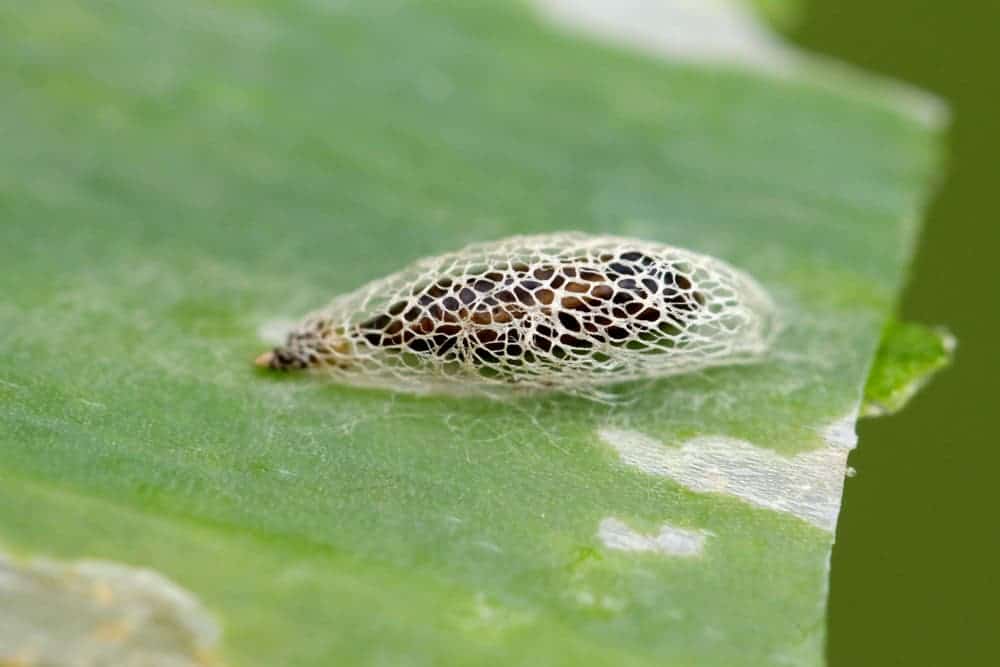
These tiny worms live in the ground and can distort the bulbs and stems of your onions. Also, bulbs will be too soft, and you can’t store them. Solve the problem with strict crop rotation.
Thrips

These tiny, yellowish-brown bugs feed on onion’s leaves and cause their curling and twisting. Plus, they are responsible for stopping the growth of your onions. As a result, the bulbs won’t mature.
Solve the problem by applying organic materials such as insecticidal soaps and neem, or use insecticidal soap to kills insects.
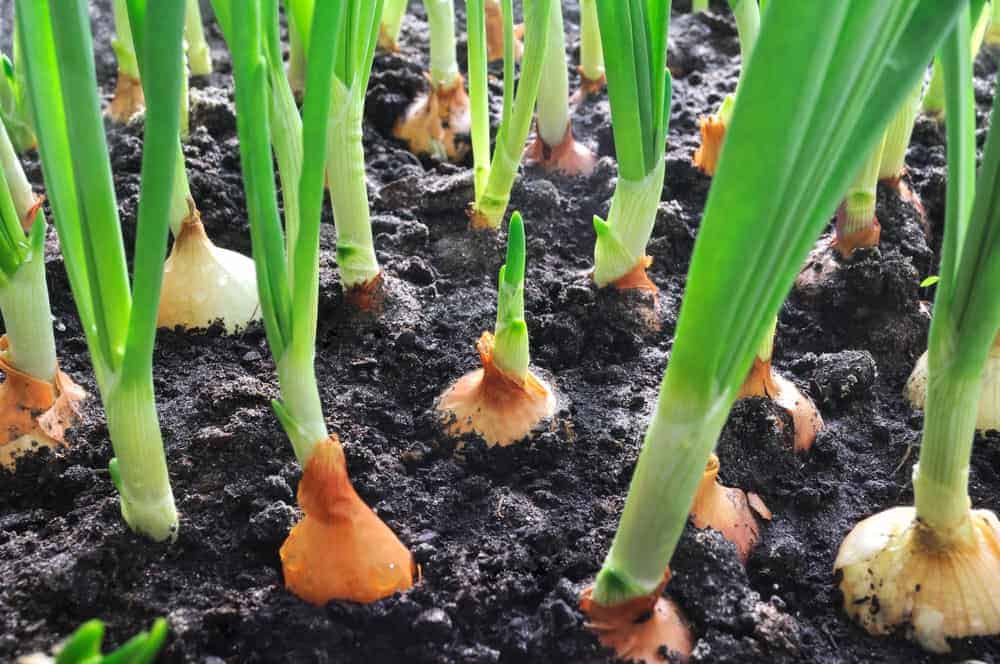
Leave a comment